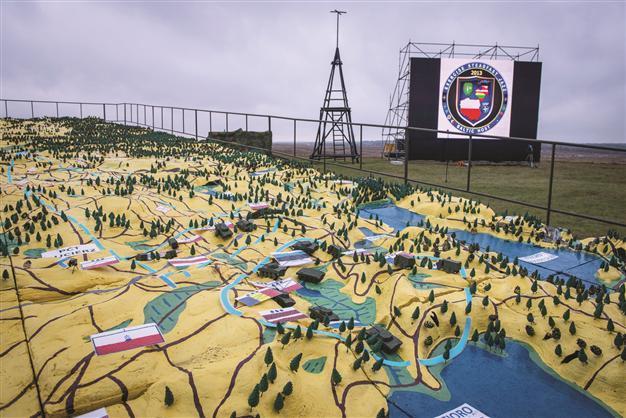Moscow worried over NATO games
ADAZI - Reuters

The ecxercise comes soon after much larger Russian maneuvers with Belarus in September.
NATO is staging its biggest military exercise in seven years this week in the Baltic countries and Poland but its insistence that the drills are not aimed at sharpening defenses against a resurgent Russia has not convinced Moscow.
NATO says the exercise, involving 6,000 soldiers from the alliance as well as non-members Sweden, Finland and Ukraine, is based on a fictional scenario in which troops from the imaginary state of Bothnia invade Estonia in a crisis sparked by competition for energy resources and economic collapse.
But Russian officials see the exercise close to their western border as confirming fears that NATO’s expansion since the end of the Cold War would lead to the allies flexing their muscles in Moscow’s backyard.
The exercise comes soon after much larger Russian maneuvers with Belarus in September that alarmed the small Baltic states, although NATO insists there is no link. Some NATO diplomats are puzzled by Russian plans to sharply increase defense spending when most Western arms budgets are being slashed to face economic problems.
NATO Secretary-General Anders Fogh Rasmussen said the exercise, dubbed “Steadfast Jazz,” was not intended to send a signal to any particular country.
‘To whom it may concern’“Of course it is a signal to anyone who might have any intention to attack a NATO ally, but I don’t expect Russia to have any intention to attack NATO allies, so the Russians shouldn’t be concerned. So you might say it is a signal ‘to whom it may concern’,” he told a news conference in Latvia.
Russia and NATO agreed to send observers to each other’s maneuvers, but this did not dispel concern in Moscow about an exercise that is intended to test the central article in NATO’s founding treaty, committing all allies to defend a member under attack.
“This is an Article 5 scenario right on our border. Of course it provokes all sorts of questions on our side as to the aim of the exercises,” a Russian diplomatic source told Reuters last month.
The Nov. 2-9 drills, which included a live fire exercise in Poland, is also intended to measure NATO’s ability to deal with “high-intensity warfare,” a refugee crisis and terrorist threats all at the same time.
